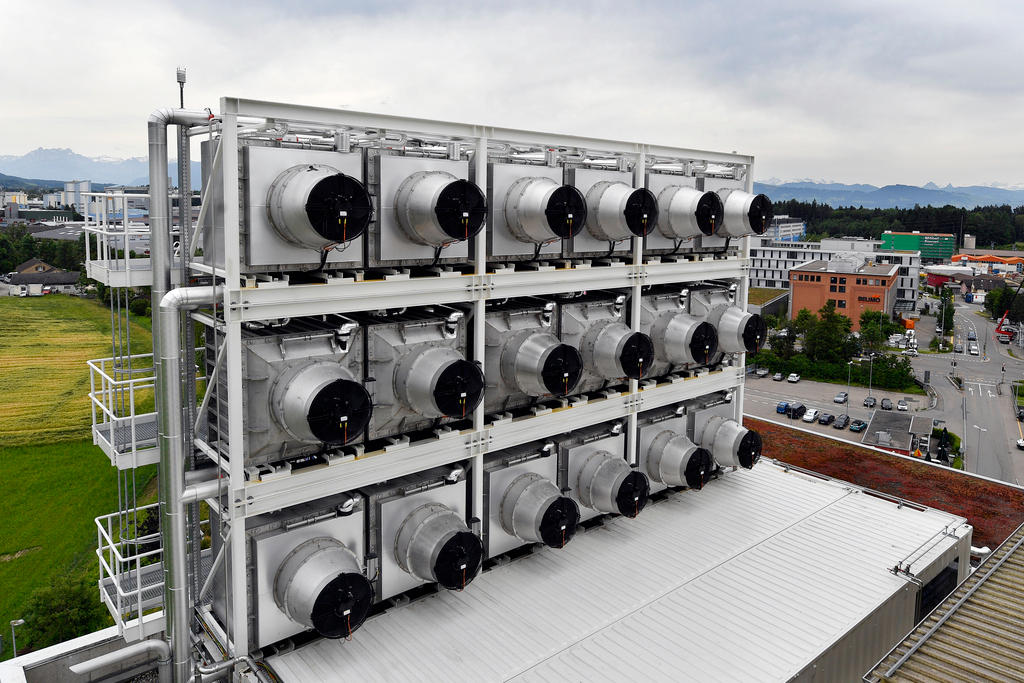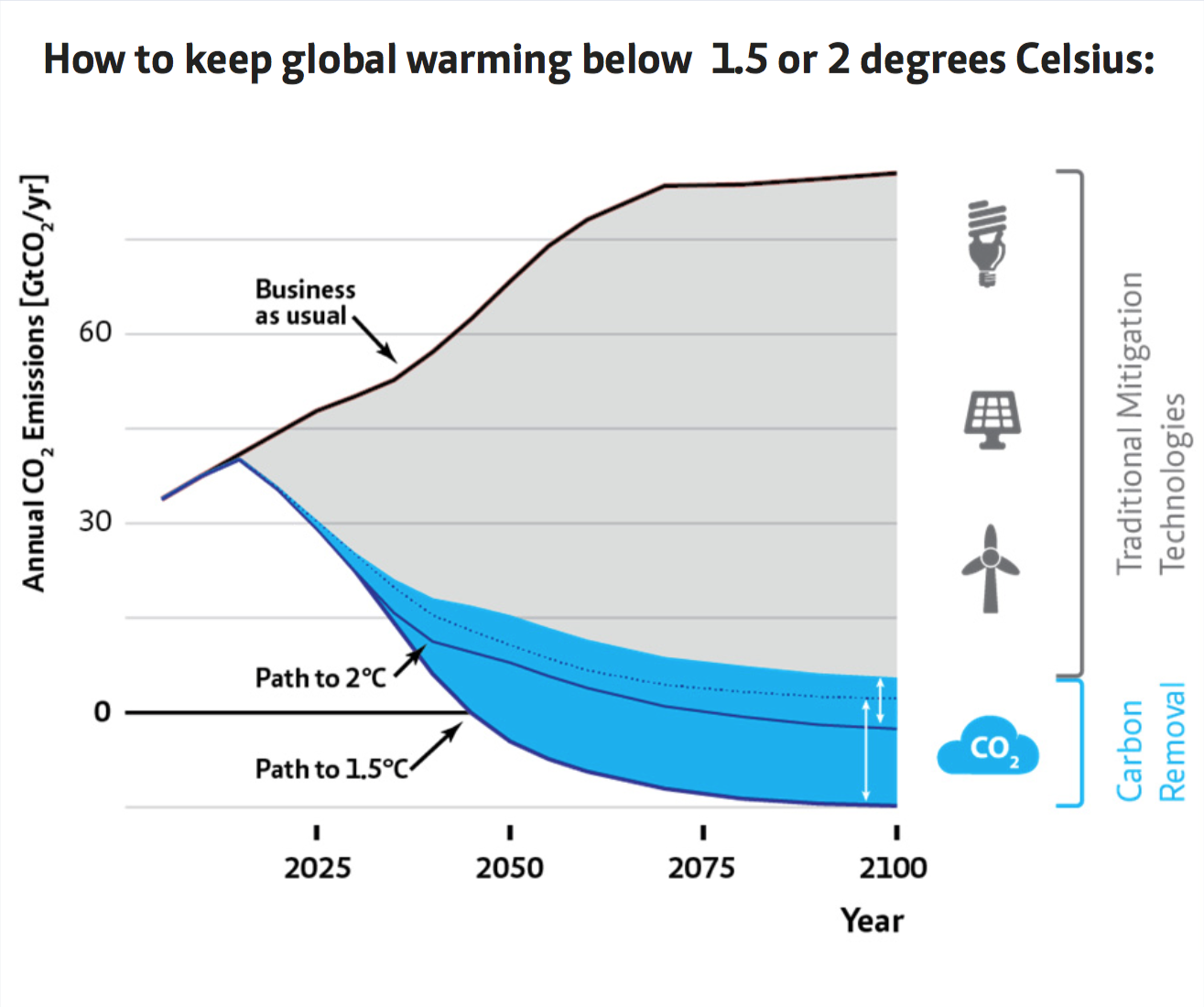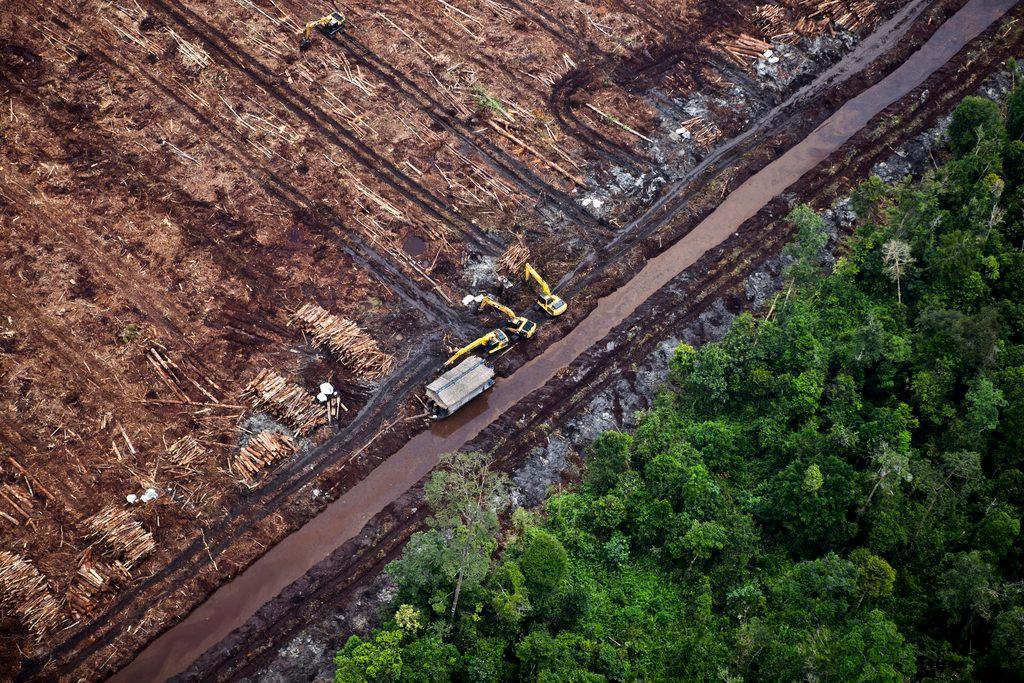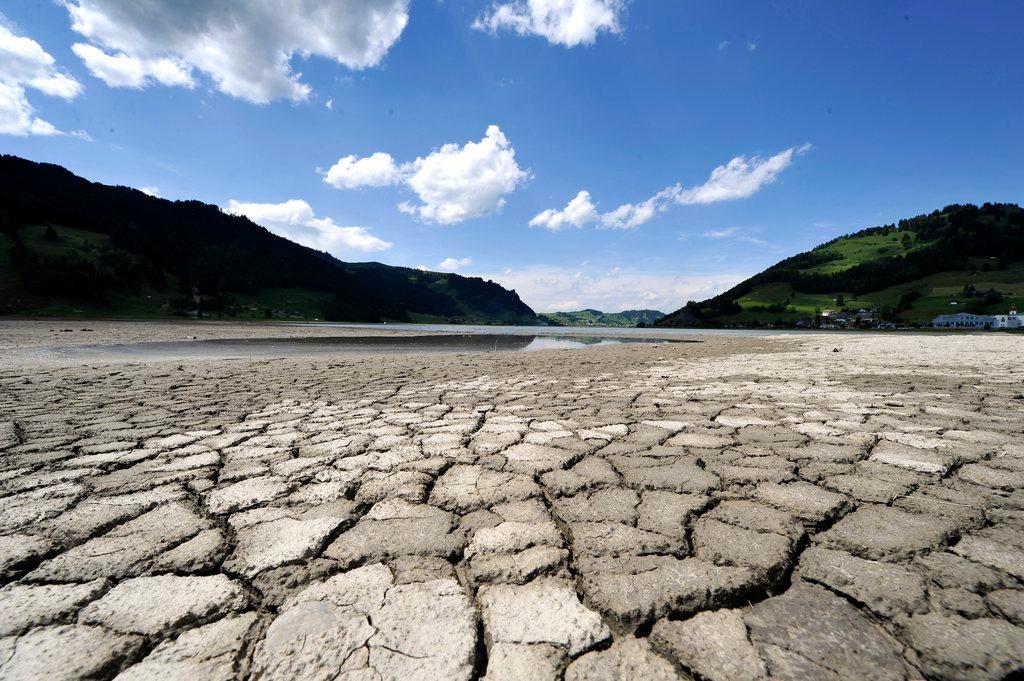Is sucking CO2 from the air the answer to global warming?

To limit global warming, it's not enough simply to reduce emissions. We also must remove CO2 from the atmosphere, a field in which Switzerland is at the forefront. What's the potential of these new technologies?
“I’m sorry, I have very bad news for you.” The words of Fatih Birol, head of the International Energy Agency, in mid-October. In the first nine months of 2018, he announced, global CO2 emissions had already reached a record high.
This development is in stark contrast with the latest findings of the United Nations Intergovernmental Panel on Climate Change (IPCC), which says a drastic reduction in emissions is needed if global warming is to be restricted to 1.5 degrees Celsius, the ambitious aim of the Paris agreement External linkon climate change.
By 2030, net emissions caused by human activity need to diminish by 45% in comparison with 2010 values, the IPCC says, while they should disappear altogether by 2050.
Climatologists therefore warn that to keep temperature increases to a manageable level, it will not be enough simply to reduce emissions. We also need to remove billions of tons of existing CO2 from the atmosphere.

Sucking up CO2, Swiss-style
When it comes to technologies to capture CO2, Switzerland “is at the forefront”, Sonia Seneviratne tells swissinfo.ch. Senevirante is a researcher at the Institute for Atmospheric and Climate Science at the Federal Institute of Technology in Zurich, and was a co-author of the last IPCC report.
The first industrial plant capable of capturing and storing carbon dioxide (a process known as DAC, or ‘direct air capture’) was built In 2017 in Hinwil, near Zurich, and designed by the Swiss start-up ClimeworksExternal link. It can absorb up to 900 tons of CO2 a year – the equivalent of the total emissions of 450 cars.
And based on this experience in Switzerland, Climeworks has also built DAC plants in six other countries, including ItalyExternal link and IcelandExternal link. The latter is the first in the world to capture CO2 from the atmosphere and then store it underground, where the gas turns into rock.
The aim of Climeworks, which recently announced it had secured further funding of about CHF30 million ($29.8 million), is to remove the equivalent of 1% of global CO2 emissions (about 300 million tons) from the earth’s atmosphere by 2025.
The whole point of their technology is to transform a waste product into a natural resource, says Climeworks communications manager Louise Charles. When it is not being stored below ground, the CO2 can be used to stimulate plant growth in hothouses, make fizzy drinks, and, as with the Italian project, produce fuel.
Sucking CO2 directly out of the air, where the concentration levels are just 0.04%, is an expensive business, however. Currently, it costs about CHF600 to capture a metric ton of CO2. “Our goal is to get this down to CHF100,” says Charles.
Switzerland emits little CO2, but imports plenty
Switzerland emitted 38 million tons of CO2 in 2016, which is about 0.1% of total world emissions, says the Global Carbon AtlasExternal link. This seems like a negligible figure in global terms. But it only looks that way. When we consider emissions per capita, Switzerland (at 4.5 tons) is just under the world average of 4.8.
And this refers only to gases produced within the nation’s borders. Taking imported goods and services into account, Swiss emissions per capita triple. According to Augustin FragnièreExternal link, researcher at the think tank foraus, Switzerland is the country that imports the most CO2 in the world compared to its own emissions.
Open questions
Cost is not the only limitation, notes Urs Neu, who heads the Swiss Forum for Climate and Global Change (ProClimExternal link) and is a member of the Swiss Academy of Sciences. “The technology to capture CO2 from the air is still at the experimental stage. The plants operating around the world are few in number, and secure storage needs to be found underground. We are still far from widespread use,” he tells swissinfo.ch.
These systems also need large amounts of power, so they only make sense if they are themselves powered by renewable energy sources (Climeworks uses heat from the Hinwil incinerator; geothermic energy is used in Iceland). Neu has co-authored a publicationExternal link on the topic, raising the obvious question of whether the best approach is to shift towards green energy or to absorb the CO2 from the atmosphere.
Among such technologies with negative emissions, experts think the most promising is BECCS (bio-energy with carbon capture and storage). This method aims to generate electricity by burning biomass and then capturing and storing the CO2 produced at a deep level under the earth.
“We could use waste wood and biological waste, though there are limited quantities of both available,” says Neu. An even bigger challenge is finding space. “To do BECCS on a large scale we would need to cultivate crops that grow quickly and that could be used for energy purposes, like corn, and grow them over extensive areas. This would mean competition with other land use options – primarily, food production”, he explains.
In the case of BECCS it is estimated that, to have a tangible effect, crops would need to be cultivated across an area of hundreds of millions of hectares.
The same goes for the simpler approach to reducing CO2 in the atmosphere – reforestation. “The best areas for this kind of approach are in the tropics. But those are the very regions where agriculture is already under pressure due to climate change. So it’s hard to find space to plant trees,” says Neu.
And so, the current challenge, he says, is not bringing back forests, but stopping deforestation. “Before planting trees, we should stop cutting them down.”

Other methods, such as fertilising the oceans or techniques to increase the amount of CO2 in the ground, are only theoretical possibilities, Neu explains. “We don’t know whether they will have tangible effects on the concentration of CO2 and, especially, whether they involve risks for the marine ecosystem and the environment generally.”
Stop-gap solution
Technologies for capturing CO2, like those for artificially modifying the climate (geo-engineering), also don’t meet with unanimous approval. According to the science advisory council of the European Academies, eliminating CO2 from the air is not enough: no technology can reduce CO2 in the atmosphere to the extent necessary and at the speed demanded by the IPCC, say the researchers in their latest reportExternal link, emphasising that the only way that will work is cutting emissions.
For Climate Alliance SwitzerlandExternal link, too, a coalition of some seventy Swiss environmental and humanitarian organisations, elimination of CO2 on a large scale is “risky and costly”. The priority, they say, should be the rapid reduction of emissions and protection of natural reserves of carbon – namely forests and oceans.
This is a point with which Neu of ProClim agrees: “capturing CO2 from the atmosphere should be a temporary solution, not a long-term strategy,” he says. “It is really just a kind of stop-gap. The only real direction remains avoiding emissions.”
Translated from Italian by Terence MacNamee, swissinfo.ch

In compliance with the JTI standards
More: SWI swissinfo.ch certified by the Journalism Trust Initiative












You can find an overview of ongoing debates with our journalists here . Please join us!
If you want to start a conversation about a topic raised in this article or want to report factual errors, email us at english@swissinfo.ch.